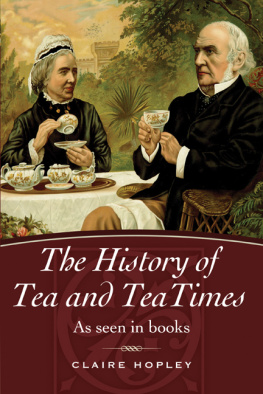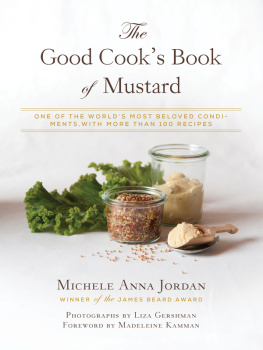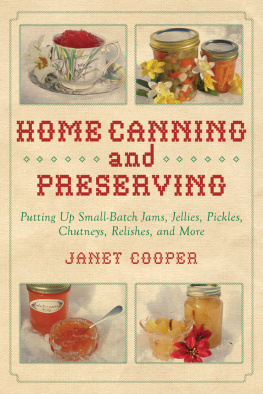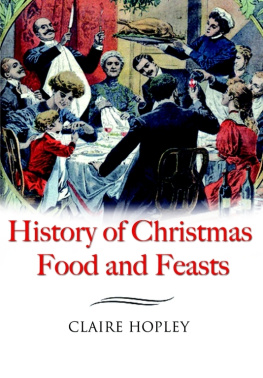Hopley - Making & Using Mustards
Here you can read online Hopley - Making & Using Mustards full text of the book (entire story) in english for free. Download pdf and epub, get meaning, cover and reviews about this ebook. City: Pownal;Vt, year: 1991, publisher: Storey Publishing, LLC;Garden Way Pub., Storey Communications, genre: Home and family. Description of the work, (preface) as well as reviews are available. Best literature library LitArk.com created for fans of good reading and offers a wide selection of genres:
Romance novel
Science fiction
Adventure
Detective
Science
History
Home and family
Prose
Art
Politics
Computer
Non-fiction
Religion
Business
Children
Humor
Choose a favorite category and find really read worthwhile books. Enjoy immersion in the world of imagination, feel the emotions of the characters or learn something new for yourself, make an fascinating discovery.

- Book:Making & Using Mustards
- Author:
- Publisher:Storey Publishing, LLC;Garden Way Pub., Storey Communications
- Genre:
- Year:1991
- City:Pownal;Vt
- Rating:5 / 5
- Favourites:Add to favourites
- Your mark:
- 100
- 1
- 2
- 3
- 4
- 5
Making & Using Mustards: summary, description and annotation
We offer to read an annotation, description, summary or preface (depends on what the author of the book "Making & Using Mustards" wrote himself). If you haven't found the necessary information about the book — write in the comments, we will try to find it.
Making & Using Mustards — read online for free the complete book (whole text) full work
Below is the text of the book, divided by pages. System saving the place of the last page read, allows you to conveniently read the book "Making & Using Mustards" online for free, without having to search again every time where you left off. Put a bookmark, and you can go to the page where you finished reading at any time.
Font size:
Interval:
Bookmark:
by Claire Hopley
Mustard seeds are so small that Shakespeare gave the name Mustard-seed to one of the tiny fairies in A Midsummer Nights Dream.
These little seeds scatter widely and grow easily. Archeologists have found mustard in prehistoric sites in Europe, Africa, and Asia. Ten thousand years ago, Stone Age people gathered mustard from the wild, and it was one of the first crops cultivated by Iron Age farmers. They probably did not have to cultivate it very strenuously. Each plant produces so many vigorous, fast-germinating seeds that ancient Hindus used mustard as a symbol of fecundity.
Indian cooks still value mustard. They use the seeds whole or crushed as a spice, and vast acreages of mustard plants grow in northern India to produce the mustard oil which is a favorite for deep-frying. In the classical world, both the Greeks and Romans loved mustard, using it to make powerful sauces and pickles. By the thirteenth century, the town of Dijon, France was already a center of mustard production. Similarly, in medieval England and northern Europe mustard gave flavor and zest to all sorts of foods. It was especially prized during the dark days of winter, when it enlivened a dreary diet of root crops and salt meat. Unlike most other spices and flavorings, it grew locally, so was inexpensive and available to those who could not afford most other spices, which were all imported from the East.
Until the sixteenth century, when the hot chili peppers of Central America arrived in Europe and Asia, nothing rivalled the mustards firepower in the kitchen. But it was not valued only for its familiar pungent bite. Like most spices, it was credited with all sorts of medicinal merits. Pliny, who wrote in the first century A.D., gave forty remedies based on mustard. John Evelyn, the seventeenth-century English scientist who wrote a book about salads, summed up the health benefits of mustard as having Incomparable effect to quicken and revive the Spirits; strengthening the Memory, expelling heaviness, preventing the Vertiginous Palsie, and is a laudable Cephalic. Besides it is an approved Antiscorbutick; aids Concoction, and cuts and dissipates Phlegmatic Humours. In some nineteenth-and early twentieth-century American cookbooks, home remedies sections recommended mustard foot-baths or mustard plasters for rheumatism and colds. Indians used mustard-oil massages to relieve arthritis, and mustard-oil tonics to improve the sheen of their hair. Todays herbalists still recommend mustard for colds and inflammation, though they warn that it can irritate the skin of sensitive people.
While mustard no longer reigns in the medicine cabinet, it is valued in the kitchen as much as ever. The seeds inhibit the growth of some yeasts and molds. This was important before refrigeration and preservatives, and it is still significant in the pickling process. Commercially packaged pickling spice always contains a good supply of mustard seeds, and if you make your own mixtures for spicing vinegar, you should never omit them, though you can add or delete other spices to achieve the flavor you like.
The other little-noted culinary virtue of mustard is that it emulsifies other ingredients into smooth mixtures. It even does a good job at holding oil and vinegar together, so sauces that include oil, vinegar, and mustard dont separate. For this reason many salad dressings and egg- or cheese-based sauces often specify a little mustard, both to pique the flavor and to keep them smooth.
Because of these diverse qualities, mustard is growing in popularity. As Americans cut calories and cholesterol, mustard is taking over the role mayonnaise once held as an all-purpose condiment. Mustard works as a sandwich spread, a sauce base, a salad dressing ingredient, and a coating medium, as well as a spice.
You can buy mustard in several forms. The most basic form is the seed. There are three types of mustard seeds: black (Brassica nigra), brown (Brassica juncea), and white (Brassica hirta). The black and brown seeds are tiny and hard, while the so-called white seeds, actually a golden beige, are larger. Black seeds are hard to find. Confusingly, the brown seeds, which are deep reddish black, are often sold as black mustard seeds. You can buy them, and also the milder white mustard seeds, packed in small bottles in the spice section of supermarkets, or more economically, in bulk in health food stores and oriental groceries.
Another way to buy mustard is to purchase the yellow powder, which is commercially prepared from the seeds. The English brand, Colmans, is widely available, and it now also comes in a coarse-ground form. You may also find powdered mustard in bulk in health and other specialty food shops.
The third way to buy your mustard is ready-made. Until a few years ago that meant buying the bright yellow ballpark mustard popular for slathering on hot dogs, or for gentler tastes, choosing a sweetish German-style mustard or a mild Dijon mustard from France. Today, mustard comes in many varieties. It may be spiked with wine or spirits, fired up with chilies or horseradish, or sophisticated with herbs or spices. It can be smooth or coarse. It may be European, but its just as likely to be American, made by a small company specializing in interesting food.
To use mustard as a flexible multipurpose ingredient, it helps to understand the way it works. The fiery bite comes from the reaction of liquid with chemicals in the seed. The reaction is most intense about 10 minutes after the mustard is mixed, then declines quickly. From this it follows that the hot Chinese mustard served with egg rolls or the powerful paste mustard the British eat with their roast beef must be made fresh. For milder tastes, mustard can be made ahead of time. Salt and sugar both preserve the flavor. Acid and heat both weaken the fire-reaction, so mustard made with vinegar or wine, and mustard used in a cooked sauce, are milder. Add mustard near the beginning of the cooking time if you want flavor without pungency; towards the end if you want it strong and hot.
Perhaps surprisingly for something with such a powerful impact, mustard keeps good company with other flavors with meat, with fish, with vegetables. This explains why we now have mustards concocted with such an array of different ingredients. The popularity of mustard in so many countries and over such long spans of time also owes much to its compatibility with all sorts of food. In most ways, the diets of the Stone Age and today have little in common. Both the Stone Age person who chewed a mustard seed along with a mouthful of meat and todays sophisticated diner who savors mustard with champagne or favorite herbs and spices share a pleasure in the seasoning power of the tiny mustard seed.
Until a few years ago, mustard occupied only a modest stretch of space on supermarket shelves, and the glowing, yellow ballpark mustard reigned supreme. Now, the mild Dijon-style mustard jostles for customers dollars at the checkout, and, for fun and adventure, you can get all sorts of magical mustard confections. You can buy mustard spiked with wine, champagne, whiskey, or beer. You can choose mustards made extra-hot with chilies, peppercorns, or horseradish. You can get mustards with herbs and mustards with honey. Some mustards are velvety smooth; others are coated, even crunchy.
These mustards positively invite you to experiment. They also make lovely hostess gifts, especially because many of them come packed in attractive jars with pretty labels.
But they do have a couple of drawbacks. One is their premium price. The other is that such fancy items often wait for buyers for many weeks. Since mustard loses its flavor over time, jars held too long can be insipid.
Font size:
Interval:
Bookmark:
Similar books «Making & Using Mustards»
Look at similar books to Making & Using Mustards. We have selected literature similar in name and meaning in the hope of providing readers with more options to find new, interesting, not yet read works.
Discussion, reviews of the book Making & Using Mustards and just readers' own opinions. Leave your comments, write what you think about the work, its meaning or the main characters. Specify what exactly you liked and what you didn't like, and why you think so.




